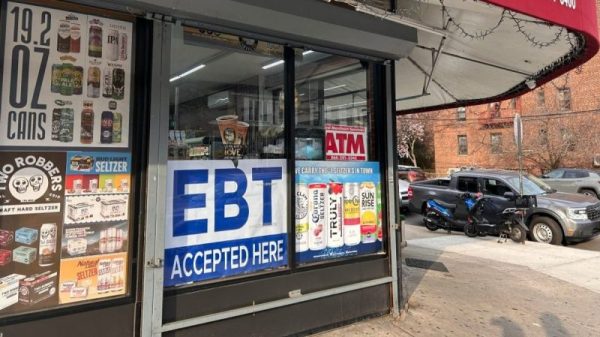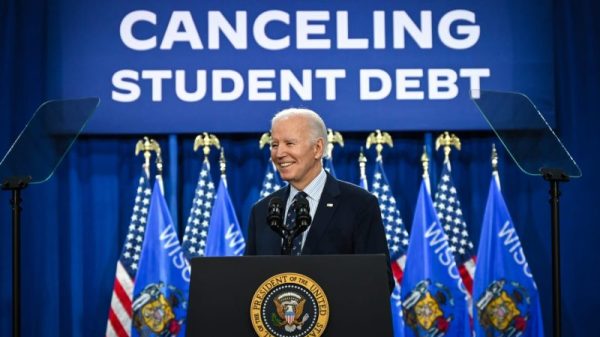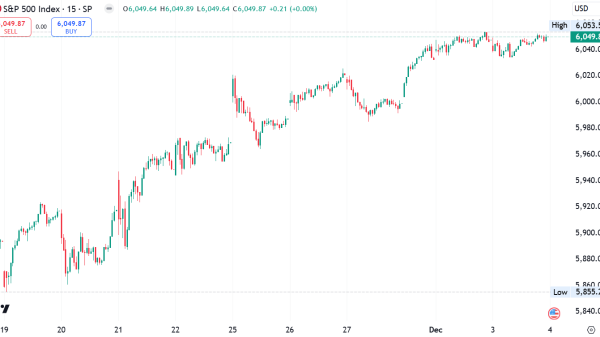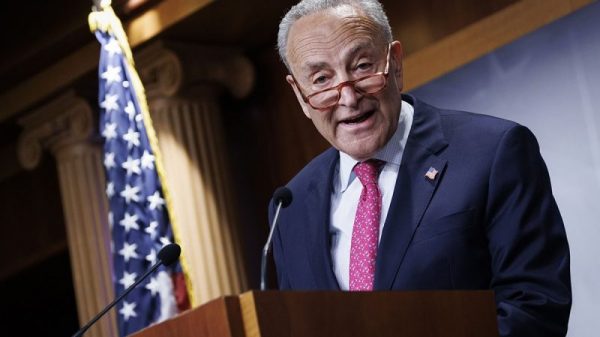Law school students can now bypass the bar exam by completing an apprenticeship to become a lawyer in Oregon — the first state in the country to offer the alternative to the widely dreaded, often criticized exam.
Other states are considering similar experience-based options beyond the traditional bar, including California, Utah and Washington, signaling a potential nationwide shift in how lawyers are licensed.
“Oregon is really thrilled to be the first, and we’re excited to have other states join us,” said Adrian Smith, chair of the Oregon Board of Bar Examiners, which administers the test. “It offers an opportunity to create a pathway for people, who we know are out there, for whatever reason, are not able to demonstrate their skills through standardized testing.”
The new approach is “more inclusive, more practice-oriented and equally able to test individuals’ competence and ability to practice law,” Smith added.
Critics for years have said that the two-day, multiple-choice test administered in each state to aspiring lawyers isn’t a realistic reflection of what it’s like to practice law, and that its claim to measure minimum competence for the job is dubious. Like many standardized tests, the exam has produced scores with racial disparities for decades, The Washington Post reported, sharpening concerns regarding a lack of diversity in the legal field.
The covid-19 pandemic sowed seeds for an alternative to the bar exam after it upended the ability of states to administer the test in the first place. Oregon officials spent about three years crafting the apprenticeship program’s standards, which the Oregon Supreme Court approved last week. Law school students will have the opportunity to choose between the traditional bar exam and the supervised practice portfolio examination in May, Smith said.
The new pathway requires that a person who attended an American Bar Association-accredited law school complete 675 hours of law practice under the supervision of a lawyer. That person then must submit documents to the Oregon Board of Bar Examiners, which will then grade the portfolio to assess whether a person has met the bar.
While the program garnered widespread support, some expressed concerns about the rigor of the portfolio-based examination. Judge Karen Ostrye, who presides over Oregon’s 7th Judicial District, said during a public comment period that 675 hours of supervised practice is “inadequate” and that the requirement should be raised to 2,000 hours. A handful of others said the program could lead to underqualified people becoming lawyers.
“The effect will be to create a second-class tier of lawyers who will be seen as unable to pass the bar. Prospective clients with any sophistication will avoid them,” stated commenter Bennett Goldstein.
Smith, of the bar exam board, emphasized that the program was crafted with the input of dozens of lawyers.
“This does not lower the bar. This is a rigorous program that tests competence in real time, in a real-life, meaningful way,” she said. “The bar exam is not the only way to test an individual’s competence. Reviewing actual documents that they have created under supervision while practicing as a lawyer is an excellent way to assess their competence as a lawyer.”
The National Conference of Bar Examiners (NCBE), which develops licensing tests used across the country for bar admission, supports the move.
The NCBE “shares Oregon’s commitment to ensuring legal competence and readiness to practice for its newest attorneys,” said Sophie Martin, director of communications. “Specific licensure standards are set by each state’s admission authorities; we continue to support all jurisdictions in their work to help achieve a competent, ethical and diverse legal profession.”
While some states’ accreditations are transferrable — granting flexibility in lawyers’ ability to move and practice across the nation — Oregon’s apprenticeship pathway will not translate across state lines.
Still, Logan Cornett, a director of research at the University of Denver’s Institute for the Advancement of the American Legal System, applauded Oregon’s new program, saying that it broadens the path for Americans to become lawyers.
The traditional bar exam is “very time-constrained, closed-book, multiple-choice. These conditions do not reflect in any meaningful way what law practice looks like,” Cornett said. “Oregon’s approach and other states that are looking at implementing other similar non-exam pathways to license are closer to what the realities of the practice are.”
Many stand to benefit, she added: students with immense anxiety related to the sit-down exam, and those who prefer to learn and be licensed in a “real-world situation,” Cornett said. “Particularly anyone who immediately sees themselves in a client-facing role, which is actually a lot of new lawyers. Those folks are going to benefit a lot from these practice-based approaches.”
Students of color probably will also benefit, according to Cornett. The bar exam has “at least contributed” to a bottleneck in inclusion and equity in the legal profession, she said, which means alternatives may increase diversity in the field.
Gaps in pass rates between White students and students of color widened in 2022 for the second straight year, Reuters reported in April. In 2022, the first-time pass rate for White examinees was 26 percentage points higher than Black test-takers.
About 81 percent of lawyers were White in 2022, according to the American Bar Association’s most recent figures, while non-Hispanic White people are just under 59 percent of the U.S. population. About 5 percent of lawyers are Black even though about 14 percent of the U.S. population is Black.
Oregon’s apprenticeship approach may lower financial barriers, too. Bar exam preparation can cost thousands of dollars, and many prospective lawyers feel pressured to take time off work to adequately prepare for the rigorous test, Cornett said.
“The exam has sort of evolved to advantage people with economic privilege,” she said.
California officials are set to consider a similar portfolio-based examination this month, according to Lawyer Licensing Resources, a group of law professors. A Utah Supreme Court working group completed a report on a multistep alternative to the traditional bar exam, and the Washington Supreme Court has a task force developing recommendations related to an alternative bar exam. Other states are in the process of doing so as well.
The NCBE plans to debut a new bar exam in 2026, Reuters reported in January.
“This is part of what has always been an evolving bar,” said Jo Perini-Abbott, director of the Portland-based Lewis and Clark Law School’s advocacy center.
The bar exam now looks vastly different than it did 40 years ago, Perini-Abbott said. She served as the chair of the Oregon Board of Bar Examiners from 2020 to 2021, and sat on the board from 2017 to 2023.
Perini-Abbott is happy that her law students will have the option to begin working and keep working.
“They won’t have to stop working to take two to three months off to prepare for the bar, or incur the cost of exam review courses,” she said. This will benefit students who are already spending their last year of law school in an externship — many of whom are nontraditional students.
Ultimately, the addition of a new pathway, she said, “will mean a better-trained body of lawyers.”

































